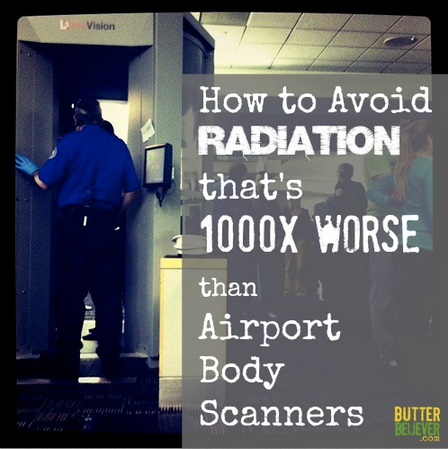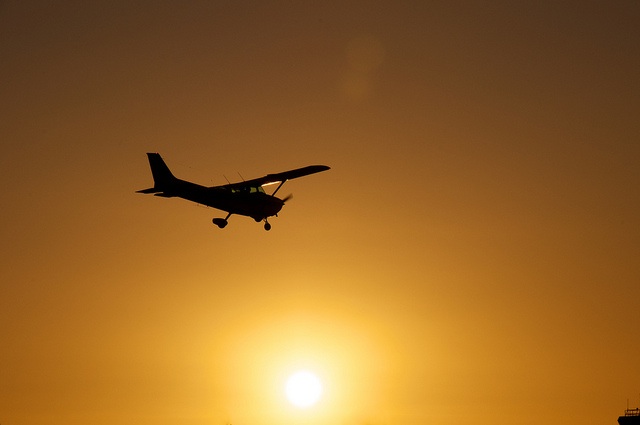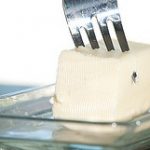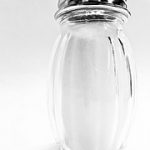When the TSA came out with those wildly invasive, full-body security scanners last year, the backlash from the outraged American public was intense. The scanners produce graphic, detailed images of a person’s naked body seen by the TSA operators. People were NOT happy.
But privacy invasion aside, many health-conscious travelers have been more concerned with the unwanted exposure to ionizing radiation when being subjected to the scanners. Since many studies suggest that backscatter x-rays (such as the TSA scanners) and other forms of ionizing radiation can be carcinogenic, fears began mounting about the safety of repeated exposure to the scanners. But how much should we really be worried about the scanners’ radiation?
Scanner radiation risks blown out of proportion
While no manmade ionizing radiation is good radiation, the amount emitted by the TSA scanners is just not what many people fear them to be.
Health expert Dr. Joseph Mercola explains:
“Screening at an airport X-ray scanner produces .02 microsieverts of radiation. But remember, you are only getting them because you are going on a flight. Nearly everyone forgets that when you fly, there is also ionizing radiation exposure. In fact, on a typical transcontinental flight at 30,000 feet you will be exposed to 20 microsieverts of radiation. That is 1,000 times the dose you receive from the scanner.” (source)
Additionally, the amount of radiation a person is exposed to in a normal day may be “the equivalent of 85 screenings in a TSA scanner,” says Ronald Gould, a physicist in the UCSF radiology department and member of the Radiation Safety Committee in the university’s Office of Research.
We’re exposed to a lot of radiation these days. With 20 microsieverts of radiation per flight, traveling by airplane, however, may be the most significant source of dangerous ionizing radiation yet from the sun’s cosmic rays.
We’re just not built to be able to handle that kind of sky-scraping altitude. Humans are designed to be walking on the earth, not flying around 30,000+ feet closer to the sun. Radiation at those levels can damage DNA, posing a serious risk to your health.
Don’t fly mid-day
Thankfully, avoiding 1,000 times the dose of radiation from a body scanner is a simple fix.
The single most important thing you can do to avoid these dangerous levels of radiation is to avoid flying between the hours of 8 AM and 5 PM, noon being the worst, when you’d be flying along many thousands of feet closer to the radiating sun. If you fly at night, the earth is blocking the powerful rays, and your radiation exposure is slashed by 99%.
What if you can’t fly at night?
Taking a red-eye and avoiding the dangerous levels of radiation you’d be exposed to during peak daylight hours isn’t always an option. Pre-Husband and I, for example, are almost never able to fly at night when we leave the island, because the best fares are usually found on Hawaiian Airlines, which doesn’t do red-eyes to our mainland destinations. I am actually flying out today in a few hours — luckily the whole flight isn’t smack dab in the middle of the day, but I will be in the air for a couple hours before the sun goes down. And I’m just not able to afford to pay more to avoid it.
To protect myself, for the past several weeks, I have been eating even more healthy saturated fats than I usually do, to help bolster my body’s ability to assimilate antioxidants found in foods. So, I’ve been adding in cream to my whole milk (which sadly, is not raw), eating plenty of grass-fed beef (as un-lean as I can find) and animal fats, and of course, loading up on butter. Those foods are all filled with antioxidants themselves, but some of the other good free-radical-fighting, antioxidant-rich foods I’ve been eating in addition include:
- Kombucha (find here)
- Cod liver oil
(find here)
- Quality olive oil (find here)
- Coconut oil (find here)
- Bone broth made with organ meats
- Shrimp and fish
- Dark greens such as kale, spinach, and broccoli
- Pastured egg yolks for cholesterol (yes, cholesterol is a vital and potent antioxidant)
What do you think about radiation exposure while flying? Would you schedule your flights to avoid radiation from the sun during the day? How else do you think we should be protecting ourselves?






I’ve also read that beet kvass would be another drinkable option to protect you from radiation for those who don’t like kombucha.
http://hiddenpondllc.com/content/3682
Fortunately, I hardly fly anymore. 🙂 Haven’t flown since 2004. Before that, I flew quite a bit.
Shoot — flying tomorrow and the day after — middle of day. 🙁 But . . .still not being body scanned. I will take my chances with the TSA guard any day. They said microwaves were safe once upon a time too. . . I just don’t buy it.
Good to know about flying at night! Overnighters are admittedly not my favorite, but definitely worth it to avoid the radiation. And I have to agree with Jen-I’ll always opt out of excess radiation whenever I can!
Thanks for posting about this! I was actually having a conversation with a friend about radiation from the TSA scanners and he quickly retorted with ‘you get a TON more radiation by flying in the plane than from the scanners’ – I was pretty disheartened by that information, especially when I looked it up online to confirm. I did not know however that the cosmic radiation is mainly from the sun. Are there other kinds of radiation at such a high elevation that we do not know about? After all, it’s not at all natural to be spending a lot of time up in the sky thousands of feet in the air (haha, this reminds me of that clip from Conan O’Brian with that comedian that I don’t like: http://www.youtube.com/watch?v=8r1CZTLk-Gk).
Either way, it makes sense to keep flying to a minimum. It’s hard to eat home-cooked nutrient dense foods if one’s always flying around (why does that sound funny to me – ‘flying around’? lol) The list of foods you have here is good to have on a regular basis, and especially if the body is going through stressful times. Anyway, thanks for the informative article and safe travels to you 🙂
I will often take a bath with epsom salt or sea salt and baking soda, having heard that it is a good way to clear radiation from the body.
HHHMMM interesting. I am wondering about iodine (having just read Lynn Farrows book “The Iodine Crisis”). Iodine is used to mitigate radiation exposure. We have been lead to believe that iodine is bad for us, but we cannot live without it. It is in every cell in our body. It just might be what we need to be protected from radiation. We also need cofactors such as selenium etc. that help the iodine work. What are your thoughts.